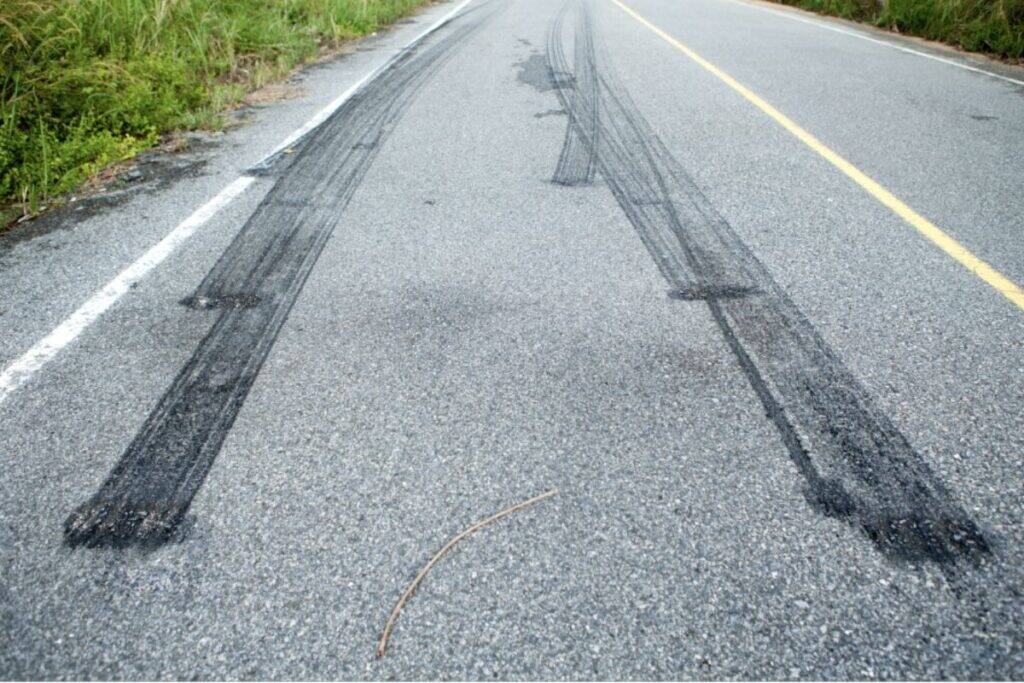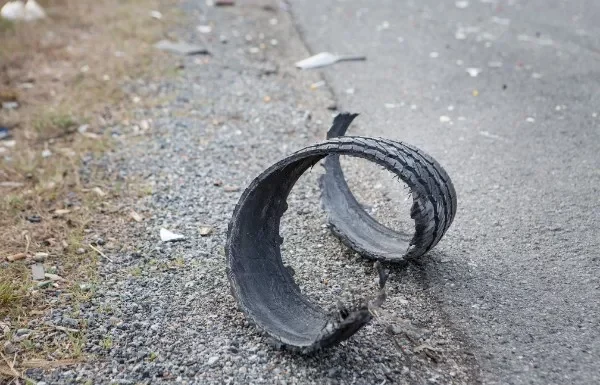Introduction
In 2025, the world generates about 400 million tonnes of plastic waste annually, with only 9.5% recycled globally {10}. Europe accounts for 29.5 million tonnes, and France alone produces 3.7 million tonnes {9}. Much of this pollution stems from unexpected sources like tire degradation, where wear and tear release microplastics into roadside environments. These particles, carried by runoff, contaminate fields and waterways, eventually reaching oceans where 75 to 199 million tonnes of plastic already accumulate {6}. Without intervention, ocean microplastic releases could double by 2060, per OECD projections {3}. This report synthesizes factual data, expert analyses, and policy trends to unpack this “invisible threat,” as described in UNEP reports [G2], emphasizing its ties to broader ecological challenges.
The Scale of the Problem
Tire degradation is a stealthy contributor to plastic pollution, with global emissions reaching 3 million tonnes of microplastics yearly from tires alone, plus another 3 million from road abrasion [G15]. Posts on social media highlight tires as potentially the largest source of harmful microplastics to aquatic life by 2050, underscoring a trend where 78% of ocean microplastics originate from tire dust [G16]. In roadside fields, these particles settle via wind and rain, then migrate to rivers and lakes, acting as “plastic reservoirs” that release toxins over time [G9].
Quantitatively, rivers transport up to 125 kg of plastic per second worldwide, equivalent to filling over 500 Olympic pools with polluted water every second [G11]. A 2025 French study reveals that tire wear on road edges liberates microplastics that contaminate rivers and seas, worsening marine pollution {2}. Globally, 19-23 million tonnes of plastic enter aquatic systems annually, with tires accounting for 28% of environmental microplastics [G3]. This is not isolated; in high-traffic areas like urban Europe, tire particles in stormwater basins pose ecological risks, as noted in recent ScienceDirect research.
Dangers to Ecosystems and Health
The dangers are profound and multifaceted. Tire microplastics leach toxic chemicals into soils, disrupting microbial life and reducing fertility—a “feedback loop” that could amplify food insecurity in agricultural zones near roads, according to expert analyses. In waterways, they harm aquatic species, with UNEP warning of biodiversity loss and food chain contamination [G2]. Human health risks include ingestion through seafood and water, potentially causing respiratory issues, as microplastics infiltrate air and clouds [G5].
Balanced viewpoints emerge: Some social media discussions downplay inevitability, arguing poor infrastructure exacerbates the issue, while others, like IUCN reports, stress intersection with climate change [G3]. A 2025 Mongabay article describes plastic pollution as a “fléau” affecting the entire planet, with tire particles in roadside soils posing secondary risks to downstream ecosystems {8} [G20]. Critically, while not all experts agree on exact health impacts—some cite insufficient long-term data—the consensus is that unchecked pollution doubles environmental harms by 2060 {3}.
Is It Inevitable?
No, experts assert this pollution is preventable, not predestined. Analyses note it’s a result of regulatory gaps and waste mismanagement, but shifts like biodegradable alternatives could curb it. For instance, without new policies, only 14% of plastics will be circular by 2060 {3}, yet innovations offer hope. Social media reflects optimism, with calls for global action amid alarms about SUVs and EVs increasing tire wear [G16]. However, in regions like India and the Philippines—major contributors to marine plastics—escalation feels likely without infrastructure [G4].
Current Solutions and Innovations
Constructive solutions are advancing. France’s anti-waste law targets ending single-use plastics by 2040, with 3R decrees (reduction, reuse, recycling) aiming for better roadside waste management by 2025 {1}. FNE’s 2025 guide proposes prevention in road edges, including targeted collection to halt microplastic dispersion {2}. Globally, the UN’s 2025 plastics treaty pushes bans on single-use items and eco-innovations {4}.
Technologically, chemical recycling of tires transforms waste into cleaner materials {4}, while pilots in Europe test runoff filters [G12]. UNEP guidelines advocate river monitoring and barriers like The Ocean Cleanup’s interceptors, potentially handling high plastic loads [G10] [G20]. Emerging trends include AI mapping and vegetative buffers in fields to reduce runoff, offering dual benefits for biodiversity and farming. In the EU, directives mandate 77% bottle recycling by 2025 and progressive bans.
Countries like China and the US vary: The US bans certain tire additives in states like California, while India pilots waste recovery. These efforts, if scaled, could halve leakage by 2040.

KEY FIGURES:
- Environ 400 millions de tonnes de déchets plastiques sont générées annuellement dans le monde, dont 29,5 millions en Europe et 3,7 millions en France {9}.
- Seulement 9,5 % des plastiques produits dans le monde en 2022 ont été recyclés {10}.
- On estime qu’entre 75 et 199 millions de tonnes de déchets plastiques sont présents dans les océans, avec un apport annuel important provenant des bords de routes, rivières et milieux terrestres avant d’atteindre la mer {6}.
- La pollution plastique marine est exacerbée par la dégradation des pneus, notamment sur les bords de routes {2}.
- Sans mesures supplémentaires, les rejets de microplastiques dans les océans devraient doubler entre 2019 et 2060 selon l’OCDE {3}.
RECENT NEWS:
- En mars 2025, France Nature Environnement (FNE) a publié un mini-guide sur la gestion des déchets des bords de route, soulignant que ces zones sont les premiers réceptacles des déchets plastiques et microplastiques et proposant des pistes pour améliorer la prévention et la gestion {2}.
- En 2025, la France engage une politique ambitieuse visant à éliminer les plastiques à usage unique d’ici 2040, avec des objectifs intermédiaires de tri et réduction d’ici 2025 et 2030 fixés par la loi anti-gaspillage et les décrets 3R {1}.
- Un traité international en discussion à l’ONU prévoit une interdiction de certains plastiques à usage unique et une meilleure gestion des déchets avec des investissements dans l’innovation écologique pour 2025 {4}.
STUDIES AND REPORTS:
- Rapport OCDE 2022: Sans nouvelles politiques, seulement 14 % du cycle de vie des plastiques sera circulaire en 2060. Les impacts environnementaux et sanitaires liés aux plastiques doubleront d’ici cette même date {3}.
- Étude française (2025) montre que la dégradation des pneus sur les bords de route libère des microplastiques qui contaminent ensuite les rivières, lacs et mers {2}.
- Étude mondiale (2025) confirme que la majorité des déchets plastiques retrouvés sur les plages et en mer sont des plastiques à usage unique, souvent issus des zones terrestres proches des routes et cours d’eau {5}.
TECHNOLOGICAL DEVELOPMENTS:
- Innovations dans le recyclage chimique des plastiques et la valorisation des déchets de pneus pour limiter leur dispersion dans l’environnement (transformation en matières premières secondaires) {4}.
- Développement de plastiques biosourcés, compostables et recyclables en boucle fermée intégrés dans des modèles d’économie circulaire rigoureuse {4}.
- Projets pilotes en France et en Europe sur la collecte ciblée des déchets plastiques aux bords de routes pour éviter leur dégradation et dispersion {2}.
COUNTRIES AND POLICIES:
| Pays | Mesures clés |
| France | Loi anti-gaspillage (2040 fin plastique usage unique), décret 3R (2021-2025), guide FNE bords route |
| UE (Europe) | Directive plastique 2025 (77 % tri bouteilles plastique), interdiction progressive plastiques usage unique |
| ONU (international) | Traité international prévu pour 2025 : interdiction plastiques usage unique, réduction, meilleure gestion déchets |
| Philippines, Inde, Malaisie | Principaux contributeurs à la pollution plastique marine, initiatives locales en cours (gestion déchets) |
| Chine & USA | Grands producteurs de déchets plastiques, politiques variables sur import/export déchets plastiques |
MAIN SOURCES:
- https://www.ecologie.gouv.fr/politiques-publiques/lutte-contre-pollution-plastique
- https://fne.asso.fr/publications/dechets-et-entretien-des-bords-de-routes
- https://www.oecd.org/content/dam/oecd/fr/publications/reports/2022/06/global-plastics-outlook_f065ef59/c5abcbb1-fr.pdf
- https://lesjoyeuxrecycleurs.com/des-chouettes-idees-vertes/le-tour-du-monde-de-la-lutte-contre-les-dechets-en-plastique-le-mouvement-est-en-marche/
- https://www.geolittoral.developpement-durable.gouv.fr/les-dechets-plastiques-a1431.html
- https://www.rts.com/fr/blog/plastic-pollution-in-the-ocean-facts-and-statistics/
- https://www.rts.com/fr/resources/guides/the-state-of-recycling-today/
- https://fr.mongabay.com/2025/02/la-pollution-plastique-un-fleau-aux-tentacules-affectant-toute-la-planete/
- https://www.notre-environnement.gouv.fr/actualites/breves/article/dechets-plastiques-les-sols-francais-touches-a-grande-echelle
- https://www.goodplanet.info/2025/04/11/le-recyclage-du-plastique-stagne-a-moins-de-10-des-volumes-produits-dans-le-monde-selon-une-etude/
Other references :
ecologie.gouv.fr – Lutte contre la pollution plastique
fne.asso.fr – Déchets et entretien des bords de routes | France Nature …
oecd.org – [PDF] Perspectives mondiales des plastiques (FR) – OECD
lesjoyeuxrecycleurs.com – Le tour du monde de la lutte contre les déchets en plastique.
geolittoral.developpement-durable.gouv.fr – Les déchets plastiques | GéoLittoral
rts.com – Pollution plastique dans les océans – 2025 faits et statistiques
rts.com – L’état du recyclage aujourd’hui 2025 – Recycle Track Systems | RTS
fr.mongabay.com – La pollution plastique, un fléau aux tentacules affectant toute la …
notre-environnement.gouv.fr – Déchets plastiques : les sols français touchés à grande échelle
goodplanet.info – Le recyclage du plastique stagne à moins de 10% des volumes …
nationalgeographic.com – Source
unep.org – Source
iucn.org – Source
ourworldindata.org – Source
pmc.ncbi.nlm.nih.gov – Source
unep.org – Source
sas.org.uk – Source
frontiersin.org – Source
unep.org – Source
worldrivers.net – Source
nationalgeographic.com – Source
unep.org – Source
sciencedirect.com – Source



